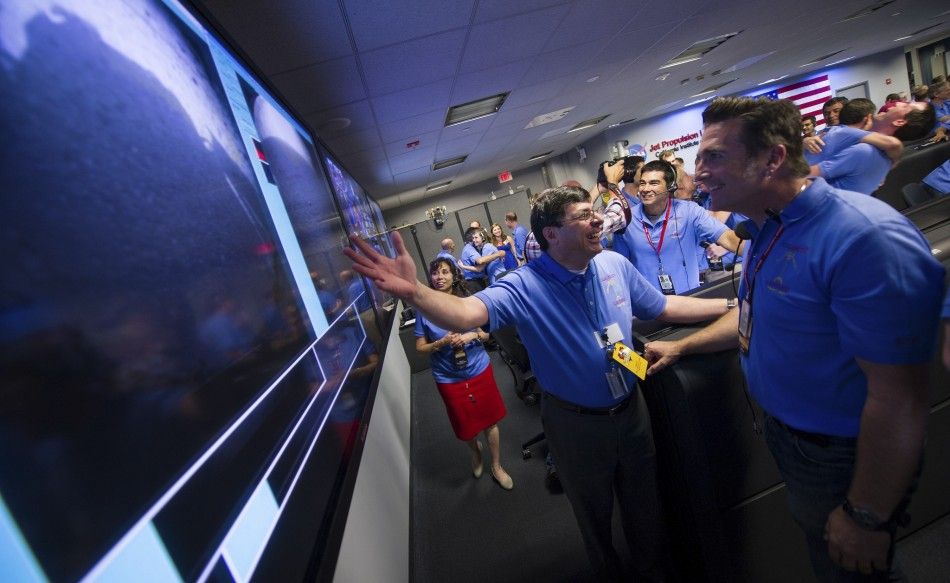NASA Lands Car-Sized Rover Beside Martian Mountain: Photos Celebrating Curiosity
NASA's most advanced Mars rover Curiosity has landed on the Red Planet. The one-ton rover, hanging by ropes from a rocket backpack, touched the Martian surface Sunday to end a 36-week flight and begin a two-year investigation.
According to NASA, the Mars Science Laboratory (MSL) spacecraft that carried Curiosity succeeded in every step of the most complex landing ever attempted on Mars, including the final severing of the bridle cords and flyaway maneuver of the rocket backpack.
Curiosity landed at 10:32 p.m. (1:32 a.m. EDT, Aug. 6) near the foot of a mountain that was three miles tall and 96 miles in diameter inside Gale Crater. During a nearly two-year prime mission, the rover will investigate whether the region ever offered conditions favorable for microbial life.
"Today, the wheels of Curiosity have begun to blaze the trail for human footprints on Mars. Curiosity, the most sophisticated rover ever built, is now on the surface of the Red Planet, where it will seek to answer age-old questions about whether life ever existed on Mars -- or if the planet can sustain life in the future," said NASA Administrator Charles Bolden.
"Our Curiosity is talking to us from the surface of Mars," said MSL Project Manager Peter Theisinger of NASA's Jet Propulsion Laboratory (JPL) in Pasadena, Calif. "The landing takes us past the most hazardous moments for this project, and begins a new and exciting mission to pursue its scientific objectives."
Curiosity returned its first view of Mars, a wide-angle scene of rocky ground near the front of the rover. More images are anticipated in the next several days as the mission blends observations of the landing site with activities to configure the rover for work and check the performance of its instruments and mechanisms.
First Higher-Resolution Image Of Mars' Surface
Just a couple of hours after landing on Mars and beaming back its first image, Curiosity rover transmitted a higher-resolution image (the first in the set of images given below) of its new Martian home, Gale Crater. Mission Control at NASA's Jet Propulsion Laboratory in Pasadena, Calif., received the image, taken by one of the vehicle's lower-fidelity, black-and-white Hazard Avoidance Cameras - or Hazcams.
"Curiosity's landing site is beginning to come into focus," said John Grotzinger, project manager of NASA's Mars Science Laboratory mission, at the California Institute of Technology in Pasadena.
"In the image, we are looking to the northwest. What you see on the horizon is the rim of Gale Crater. In the foreground, you can see a gravel field. The question is, where does this gravel come from? It is the first of what will be many scientific questions to come from our new home on Mars."
During future mission operations, these images will be used by the mission's navigators and rover drivers to help plan the vehicle's next drive.
The mission is managed by JPL for NASA's Science Mission Directorate in Washington. The rover was designed, developed and assembled at JPL.
Have a look at images of the Martian surface and the happy moments at NASA following the successful landing of Curiosity.







© Copyright IBTimes 2024. All rights reserved.






















